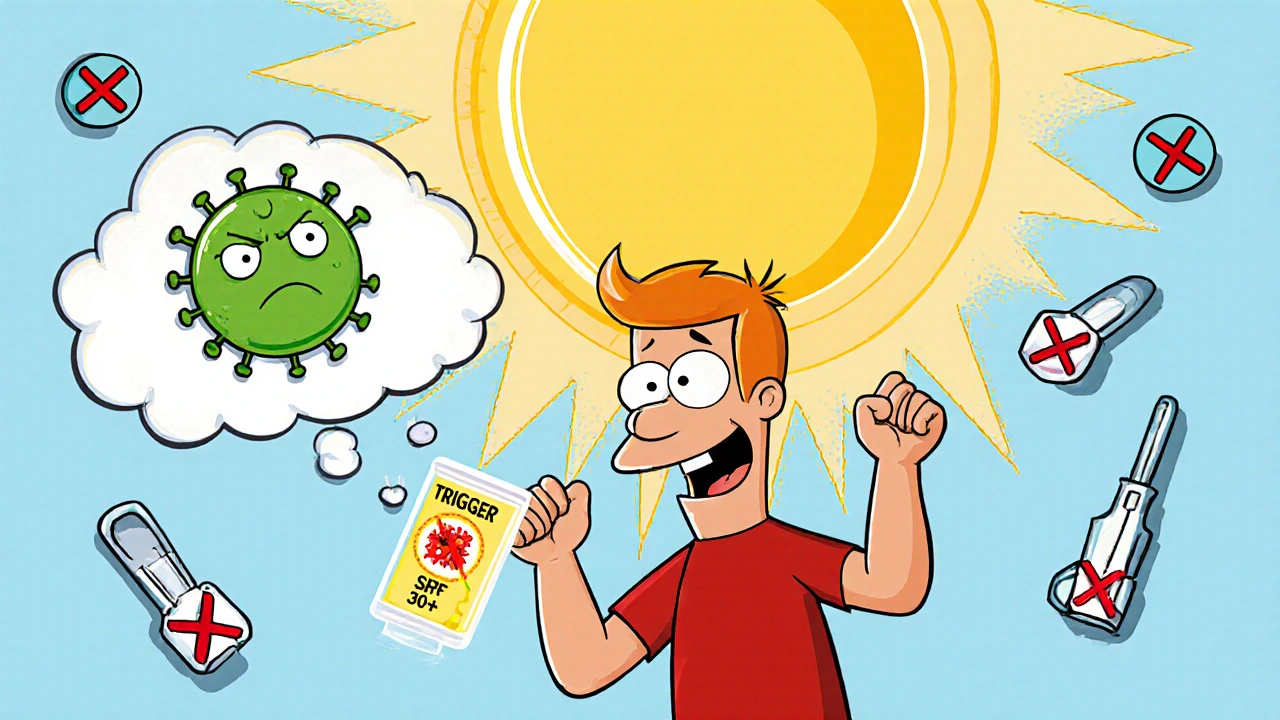Learn how to prevent herpes simplex recurrences with proven antiviral therapy, trigger management, and early treatment. Reduce outbreaks, lower transmission risk, and take back control of your skin health.
Cold Sore Triggers: What Causes Outbreaks and How to Avoid Them
When you get a cold sore, a small, painful blister caused by the herpes simplex virus, usually HSV-1. Also known as oral herpes, it’s not just a nuisance—it’s a sign your immune system is under pressure. Cold sores don’t appear out of nowhere. They’re triggered by specific, repeatable events that weaken your body’s ability to keep the virus dormant.
One of the biggest triggers is sunlight, especially UV exposure that damages the skin around your lips. People who get cold sores after a day at the beach or skiing aren’t just unlucky—they’re reacting to UV rays that activate the virus in nerve cells. Stress, whether from work, sleep loss, or emotional strain, is another major one. Your immune system slows down under pressure, and that’s when HSV-1 wakes up. Illness, like a cold or the flu, does the same thing. Even something as simple as a hormonal shift during your period can set off an outbreak.
Some triggers are less obvious. Lip dryness from wind or dehydration cracks the skin, giving the virus an easy entry point. Certain foods high in arginine—like chocolate, nuts, and seeds—may fuel viral replication, while lysine-rich foods like dairy and vegetables can help balance it out. Medications that suppress your immune system, like steroids or chemotherapy drugs, also raise your risk. And yes, kissing someone with an active sore or sharing a lip balm, towel, or glass can spread the virus—even if they don’t have visible blisters yet.
The good news? You don’t have to wait for the next outbreak. Knowing your triggers lets you take control. Use sunscreen on your lips daily. Manage stress with sleep, breathing, or movement. Keep your lips moisturized. Eat balanced meals. Track your outbreaks in a simple journal—note the weather, your stress level, what you ate, and when you got sick. Patterns will show up. Once you see them, you can act before the tingling starts.
Below, you’ll find real-world advice from people who’ve been there—how to spot early signs, what actually works to shorten outbreaks, and which common myths are just wasting your time. No guesswork. Just clear, practical steps to reduce how often cold sores show up—and how bad they get when they do.

